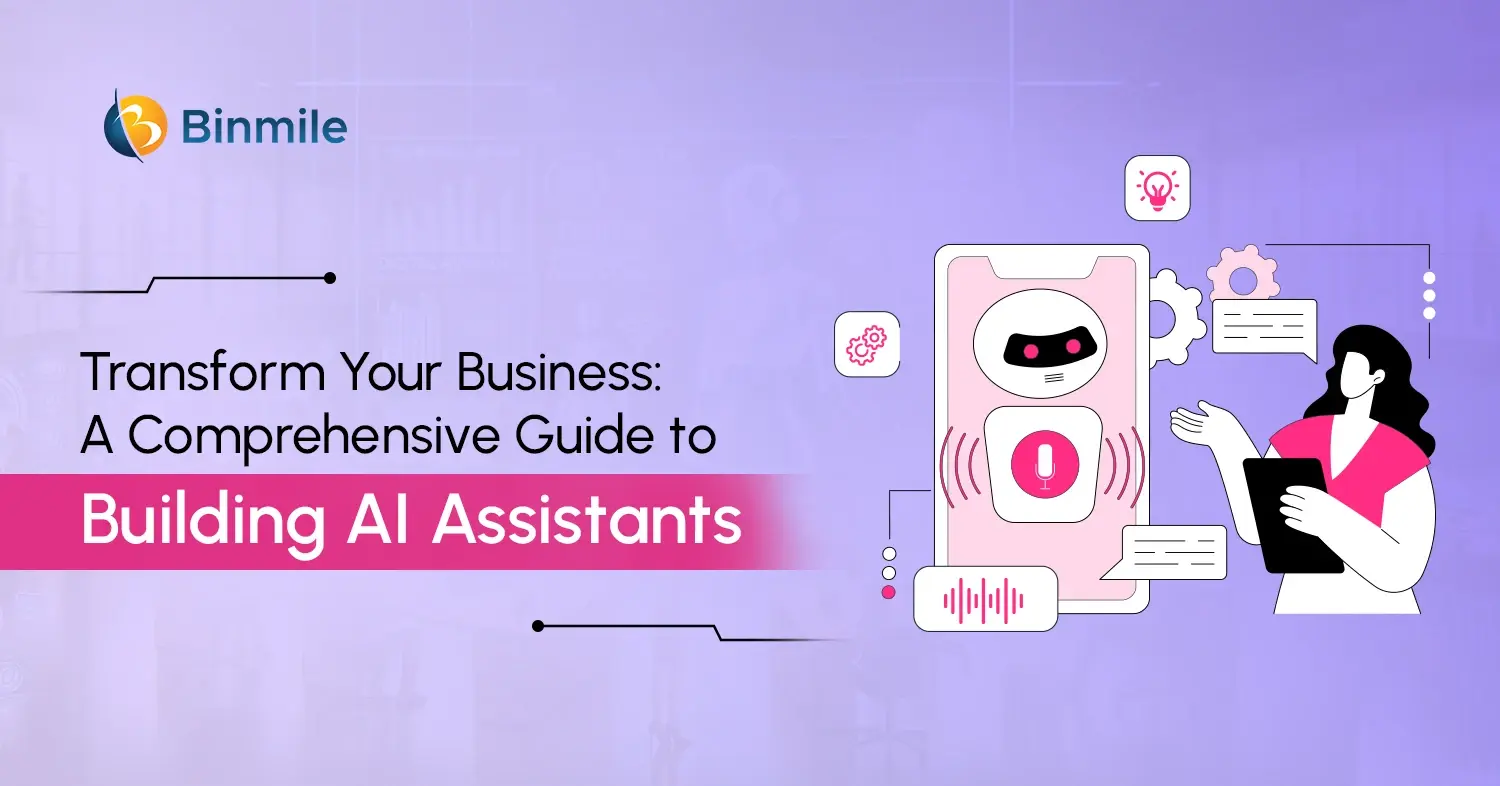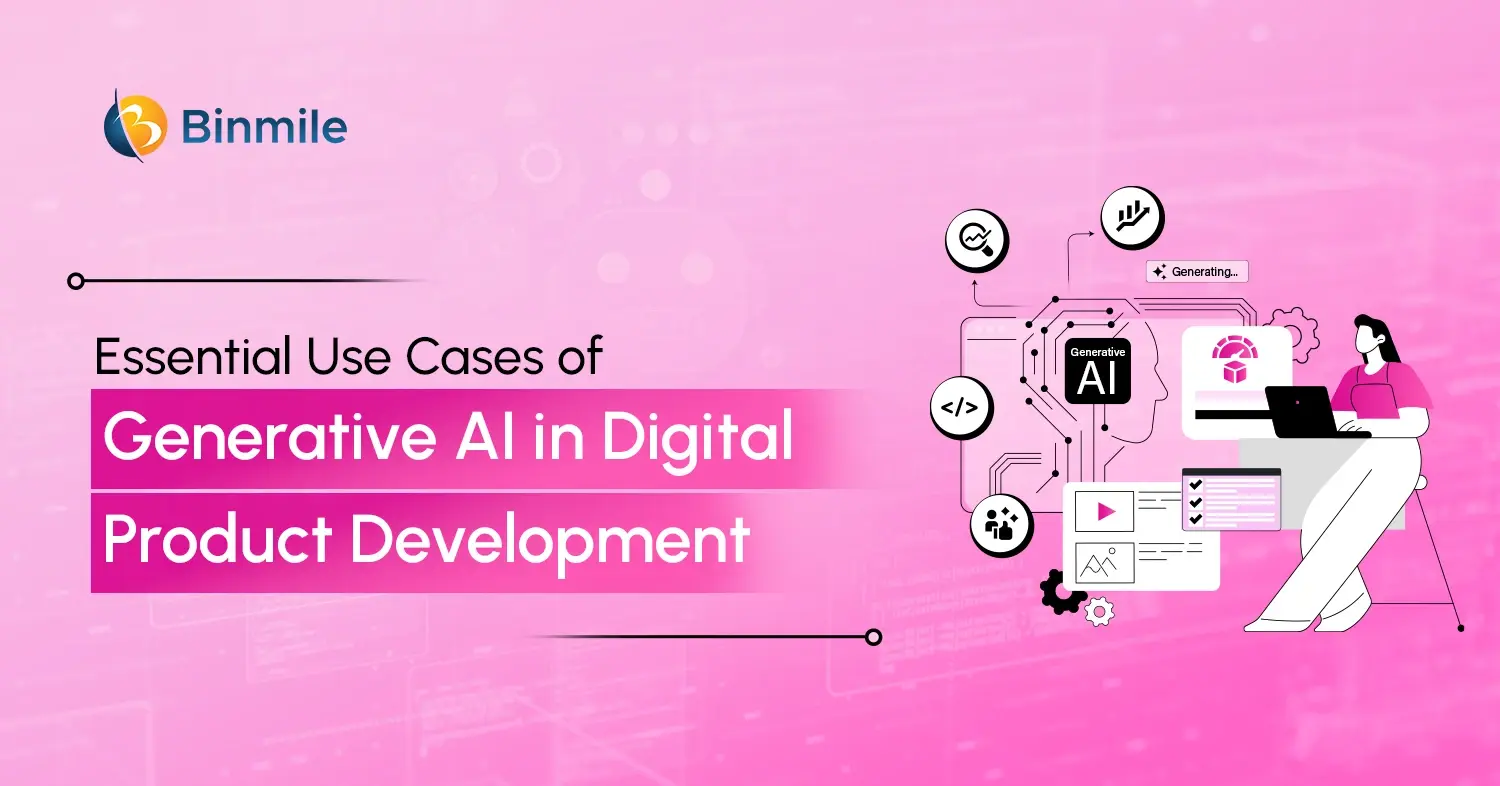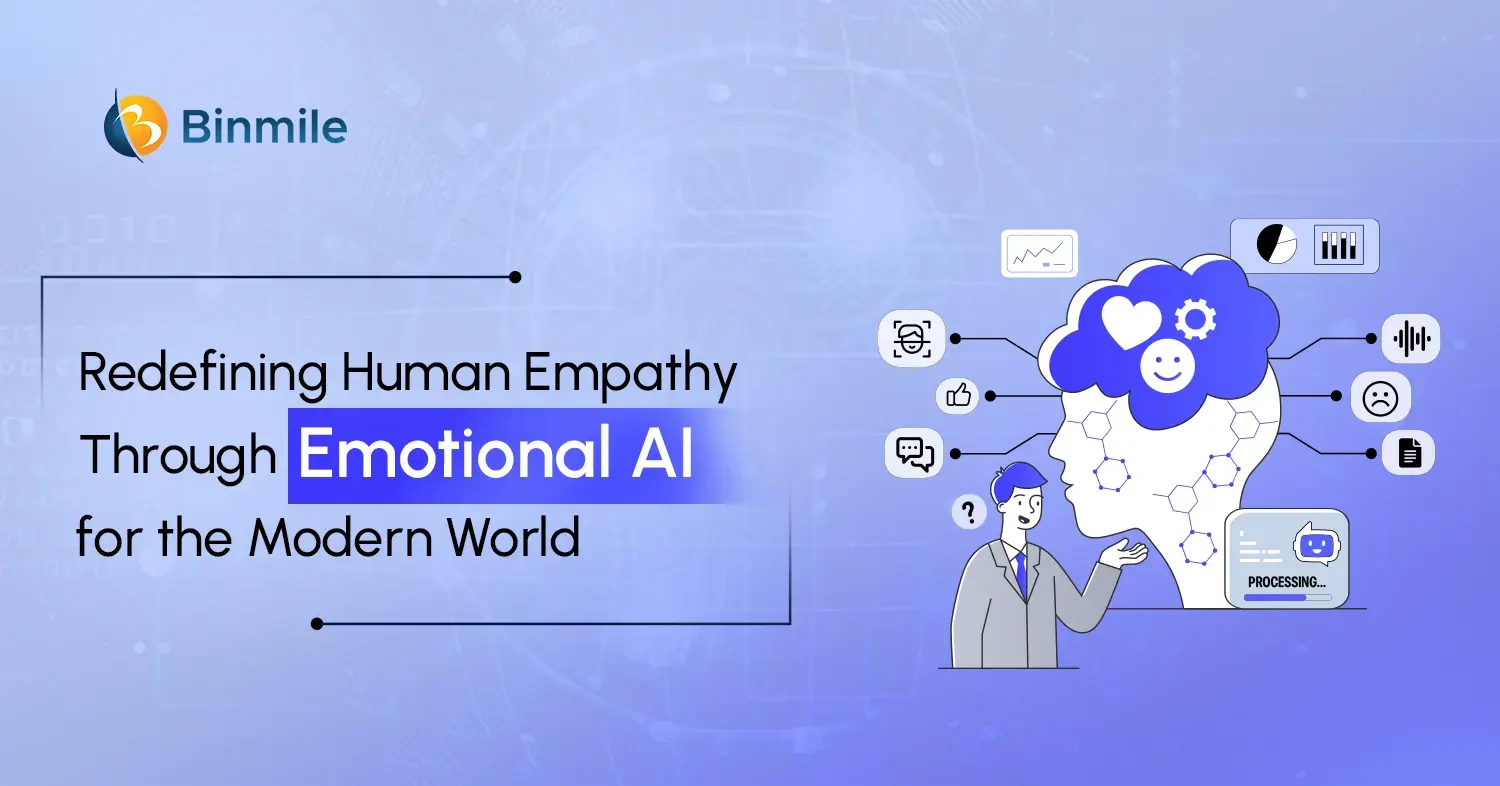It is an understatement to state that artificial intelligence in business has transformed how organizations operate, perform, engage with customers, and deliver services. From automating mundane tasks such as internal and external communications to more advanced operations such as coding, software development, and data analysis, AI in business is everywhere. As AI technologies improve and evolve, new business applications emerge. One such is an AI assistant for businesses. These Artificial intelligence (AI) assistants or virtual personal AI assistants are software applications programmed to act on behalf of users to perform tasks or services for users according to commands or questions.
From helping businesses keep track of schedules to answering customer queries or challenging questions, these assistants optimize business functions, boost employee productivity, and drive business value. However, to build the best AI assistants that support functional specialization and follow the highest ethical, security, and privacy standards, you need to follow a comprehensive strategy to make AI assistants. In this blog, we will help you with precisely that. We will discuss how to make your own AI assistant in 7 practical steps, how AI assistants work, and the key features your personal AI assistants must have.
What is an AI assistant? Why Is It Important for Your Business?

As discussed in the introduction, AI assistants are intelligent software applications powered by artificial intelligence (AI) that respond to inquiries in human-like languages such as text, video, or voice. They utilize natural language processing (NLP) to process, understand, and conversationally generate responses to system users.
What can it do for your business? Well, everything is fine as long as they have defined prompts, though they can use tools in a limited way when equipped and trained to do so. So, from managing your calendar to setting reminders, creating MOMs, and crunching numbers, these AI assistants are all about easing the burden of work on you.
Types of AI Virtual Assistants
Here’s a quick rundown of the leading AI virtual assistant types for your modern workplaces:
1. Productivity Assistants
They can help you streamline your tasks and supercharge your efficiency across an organization.
For example, Microsoft Cortana or Google Assistant
2. AI Assistant Chatbots and Virtual Assistants for Customer Service
These AI assistants enable you to manage customer support queries promptly and with ease.
For example, Zendesk AI and Delta Air Lines’ “Ask Delta” Chatbot.
3. AI Sales Assistants
Generate leads and uncover in-depth customer insights with these AI-powered conversation intelligence solutions
For example, Salesforce Einstein, Gong.io
4. AI Virtual Assistants for Content Creation
These assistants can rapidly create content such as emails, reports, presentations, or other written materials.
For example, ChatGPT, Gemini AI.
5. AI Assistants for Data Analytics
Automate, accelerate, and simplify the process of turning raw numbers into actionable insights and improve your workflows and processes.
For example, Zoho’s Ask Zia Tableau.
Build an AI assistant that adapts to your business, automating tasks and improving service efficiency with precision and reliability.

Benefits of AI Virtual Assistant Development
AI assistants do more than automate your processes; they immensely benefit your business. So, let’s explore them:
- It makes you more efficient with task automation while you focus on high-value work.
- Time savings, schedule a meeting, and send mail within seconds, not minutes.
- An AI assistant will let you scale back the number of people you employ, as it can cover tasks you would otherwise have to outsource or do yourself.
- It enhances your communication with clear and consistent internal or external communication.
- It helps you make data-driven decisions by eliminating human errors and cognitive bias and reporting in real time.
- 24/7 availability to help your customers with their queries, empowering you to run a business that creates opportunities for everyone and is always available/accessible.
7 Steps to Build AI Assistants for Your Business
Building an AI assistant for your business can seem daunting. Still, by breaking down the process into manageable steps, you can create an assistant that improves efficiency, enhances user experience, and adds value to your organization. Here’s a step-by-step guide to help you start building AI assistants for your business.

1. Define Clear Objectives & Identify Use Cases
Begin by clearly defining your “why.” What specific business problems do you aim to solve with an AI assistant? Are you looking to improve customer service, automate repetitive tasks, gain valuable insights from data, or achieve other goals? Once you’ve established your objectives, identify specific use cases where an AI assistant can deliver the most significant impact.
For example, in customer support, an AI assistant chatbot can provide 24/7 availability, instantly answer FAQs, and offer personalized support. They can also effectively qualify leads, recommend products, and target sales and marketing campaigns. Aligning the process with business goals helps you keep effective AI assistants.
2. Choose the Right AI Technology
Selecting the appropriate AI technology is crucial for successfully developing your AI assistant and ensuring it meets your organizational goals. AI-powered Chatbots are well-suited for conversational interactions, handling simple inquiries, and providing essential support. In contrast, virtual assistants offer more sophisticated capabilities, such as complex task execution, integration with multiple systems, and personalized experiences.
Machine learning models are your go-to for tasks like sentiment analysis, predictive modeling, and fraud detection. Natural Language Processing (NLP) is the top choice for AI assistants who must understand and respond to human language, including complex queries and nuanced requests.
3. Gather and Prepare Data
Data is the lifeblood of any successful AI assistant. High-quality and extensive data is essential for training accurate and practical models. Collect relevant data from various sources, including customer interactions, transaction history, product catalogs, internal documents, etc. Once collected, meticulously clean and prepare the data. This may involve data cleaning, transformation, and feature engineering to ensure accuracy, consistency, and completeness. Remember, the more accurate and correct data you have, the more effectively it reduces the resources required to train and develop models.
4. Design the User Experience (UX)
A user-centric approach is paramount since the app will be used by people of various age groups with different levels of tech knowledge. Ensure it is as straightforward and user-friendly as possible while designing an intuitive and seamless user interface that prioritizes user needs. Personalize the experience by tailoring interactions to individual user preferences and needs. Ensure your AI assistant is accessible across various channels, such as websites, mobile apps, and messaging platforms. Clear and concise communication is crucial. Use simple language, provide visual cues, and offer clear instructions to guide users effectively and offer options for help.
5. Develop and Train the AI Model
Select the AI model that best aligns with your specific needs and available data. Train the model using your prepared data to recognize patterns, understand user intent, and generate appropriate responses. Building AI assistants isn’t just about functionality; it’s also about ensuring they’re built and deployed responsibly. Ethical considerations and user privacy must be at the forefront of your AI development. A responsible AI assistant should be transparent, secure, and unbiased. Ensure the AI assistant is trained on diverse datasets to avoid bias.
This includes reviewing the training data for fairness and ensuring the assistant doesn’t perpetuate stereotypes or exclude certain groups. Additionally, you must develop transparency about collecting, storing, and using data and ensure that the AI adheres to strict data security standards. Therefore, the model should be regularly evaluated and refined based on user feedback and performance data to ensure optimal performance and accuracy.
6. Integrate and Deploy AI Assistant
Successful integration involves connecting your AI assistant with existing business systems, such as CRM and ERP, using APIs to ensure seamless data flow and access. You must select the most suitable deployment method: cloud-based for scalability and flexibility, on-premise for greater control, or a hybrid approach for a balanced solution. Remember to design your system for scalability by utilizing cloud platforms with auto-scaling capabilities and efficient data management techniques. This ensures your AI assistant can handle increasing user demand and data volumes while operating smoothly within your business infrastructure.
7. Monitor, Evaluate, and Iterate
Once you are done with the development, ensuring your AI assistant performs as expected is crucial. It is paramount for business continuity and delivering the expected customer experience. Therefore, continuous monitoring of key performance indicators (KPIs) such as customer satisfaction, resolution rates, and cost-saving is necessary to comprehensively view an application’s performance the moment it occurs and correct it whenever there is an issue. Gather user feedback through surveys, in-app feedback mechanisms, and customer support interactions. Utilize data and feedback to identify areas for improvement, refine the AI model, and enhance the overall user experience.
Our expert developers are ready to build intelligent AI assistant tailored to your needs, enhancing both internal workflows and customer interactions.

How Much Does Personal AI Assistant App Development Cost?
Several factors can impact your AI app development cost, like any other app. Factors such as AI assistant types, UI/UX designs, and ongoing costs, such as maintenance and upgrades, must be considered before developing personal AI assistants or for business use. However, please note that there is no development cost, so we provide an estimated range. An average AI personal assistant app development cost can range between $40,000 – $100,000. It can be over $500,000 or more if you want to integrate advanced AI technologies.
Conclusion
Building an AI assistant for your business can enhance operational efficiency, provide better customer service, and drive growth. As AI technology evolves, companies that successfully integrate AI assistants will be better positioned to scale and innovate in an increasingly competitive landscape. Hopefully, this blog has helped you understand the 7 steps on how to build an AI assistant for your business. These steps ensure that the assistants are well-aligned with your business goals, integrate seamlessly with existing systems, and continuously improve based on user feedback and performance data.
So, start small, iterate often, and keep learning from your users to build the most effective AI assistant for your business. Our leading AI development company can simplify your AI journey. With us, you can create personalized AI assistants that meet your preferences and provide value to end-users.
Want to work with experienced AI developers who can create software that fits your unique business processes and scales with growth? They are just one call away!
Frequently Asked Questions
When businesses learn how to build an AI assistant correctly, they can automate repetitive tasks like customer service, scheduling, and internal ticketing, cutting labor costs while improving response speed.
Most businesses don’t need a custom LLM. Pre-built models from OpenAI, Anthropic, or Google are powerful enough. The guide explains when you should stick with off-the-shelf tools and when a custom model becomes worth the investment.
Learning how to make your own AI assistant includes continuous testing: analyzing conversation logs, updating prompts, refining workflows, and adjusting model settings. The guide includes optimization steps to increase accuracy over time.
You can use AI as a personal assistant by automating tasks like scheduling, email drafting, research, reminders, and document creation. Connect it to your apps, set clear workflows, and customize prompts so it supports your daily productivity efficiently.









